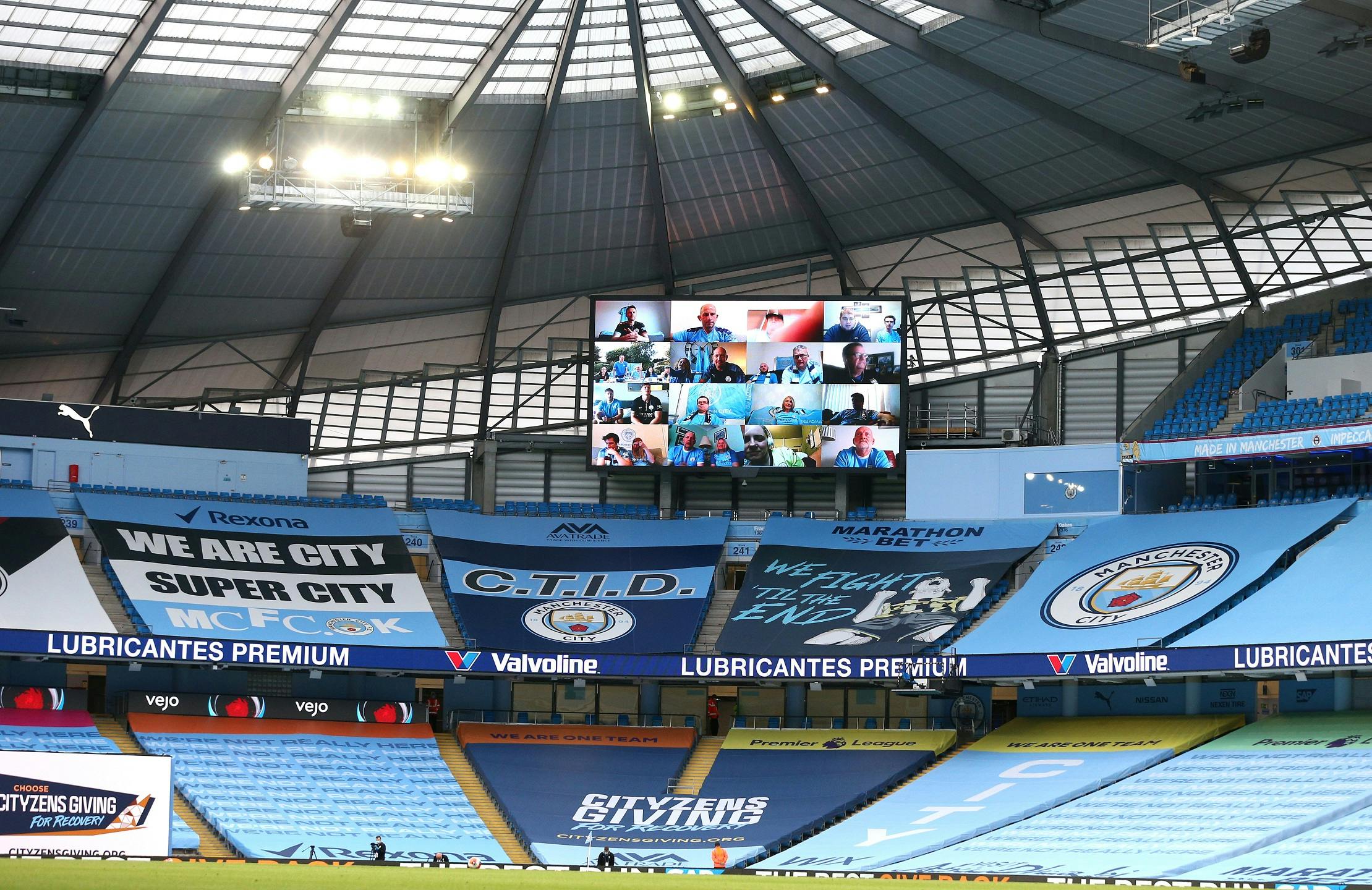The rise of over-the-top (OTT) streaming as a medium of choice for an increasing number of sports rights-holders has provided new opportunities for real-time engagement with fans.
The global growth of OTT was relentless long before Covid-19 struck, inside and outside sport. For example, a February 2020 report by Nielsen found that 60% of Americans subscribed to more than one paid video-streaming service.
However, the expansion has accelerated due to the pandemic. Global revenue for OTT video platforms surged by 26% in 2020, according to PwC, with the total projected to continue rising sharply in the coming years, almost doubling from $46.4bn in 2019 to $86.8bn in 2024.
Fan walls
With events such as this year’s Olympic Games in Tokyo going ahead without overseas spectators, many sports rights-holders have already turned to innovative solutions to address the challenge of how to bring fans closer to the action.
For example, the likes of Premier League football clubs Manchester City and Tottenham Hotspur have erected digital ‘fan walls’ in their empty stands. With the viewers reacting to the action on the field in real time, the players have an authentic experience of playing in front of a crowd, while the fans are given a virtual front-row seat.
In the broader entertainment space, the Grammy Awards also recently featured a fan wall.
Examples like this show how unique experiences that are not available offline can be delivered to an increasingly tech-savvy audience.

Virtual watch parties and virtual tailgate parties
On a human level, friends and families who have been unable to meet in person have opted to connect more frequently on digital platforms over the past year, providing the behavioural foundations for a seamless transition to a more social OTT experience via digital watch parties.
These virtual gatherings on services like Scener – which is powered by Agora, an interactive and live-streaming technology provider – provide a true social experience, allowing friends and family to tune in to watch an event, such as a sports match, and interact with each other through the platform, with these ‘social video’ capabilities supporting the drive for real-time engagement.
Similarly, online tailgate parties, replicating their namesakes from the US major leagues, give fans a platform to connect and mingle on a face-to-face basis with others in real time before games, bringing the usual offline festivities and atmosphere of such an occasion to an online setting.
Moreover, these virtual solutions, which provide viewers with a platform for interactive user-generated content, actually break down the travel and time barriers that can prevent people from congregating physically in a single location.
There are other key benefits attached to the online setting versus the offline experience.

Virtual talk shows
In sport, rights-holders have the opportunity to introduce a multitude of additional content options. These can range from unique camera angles in live broadcasting to pre- and post-match interviews and behind-the-scenes footage, as well as live ‘talk shows’ driven by user-generated content and providing exclusive virtual access to key figures.
These options, only available online, help to drive even greater personalisation, which can be boosted further through gamification, whether through quizzes to test a viewer’s knowledge or prediction competitions to test their luck.
These cost-effective gamification features can be presented as live game shows during breaks in the live sporting action.
Sony Pictures, Kumu and Live Play Mobile are among the platforms to embrace the possibility of having these types of viewer interactions via digital gamification offerings.
Playing these games can provide a rights-holder with a key point of differentiation in a competitive landscape, helping to drive conversations and, simultaneously, interest in the output on the screen in real time.
Additionally, although gamification is increasingly seen as a viable tool to drive engagement in a various entertainment sectors, integrating gamification into a field that already has natural competitive elements, such as sport, provides a uniquely powerful proposition.
This level of engagement can translate into significant monetisation opportunities for rights-holders.
When real-time engagement is introduced, transactions over the content – such as virtual tipping, e-commerce and live betting – become mainstream, helping the OTT platform to monetise its traffic.
As an example of a use case, e-commerce can be integrated into the OTT viewing experience, alongside tipping functions and premium subscriptions, by allowing members of the audience to purchase items that are relevant to the action on the screen.
A viewer could click through options to buy tennis equipment without needing to leave the platform during coverage of a tennis match.
The rights-holder can make a commission on every item purchased, and can also make their own merchandise available – or products from their sponsors – with sophisticated algorithms ensuring their relevance.
“With the help of artificial intelligence-based recommendations, these products can be tailored to the user’s interests, preferences or behavioural history,” says Brighton Shi, Senior Product Marketing Manager at Agora.
“These algorithms are able to predict a specific user’s preference in relation to an item, based on their profile.”
The broader benefits of big data in this context will lead to an enhanced understanding of the user.

Big data, the next goldmine
With social media features having been integrated into the rights-holder’s streaming platform – rather than sitting outside it on a third-party website – essential viewer data is retained in-house.
As a result, with more data feeds, artificial intelligence (AI) can build a more accurate picture of a viewer and, in parallel, more accurate recommendations to enable a customised experience, direct from the rights-holder.
“The big data and AI-based content recommendation engine is like a clever and experienced salesperson who grasps the needs, tastes and requirements of the user. It is able to make knowledgeable decisions about recommendations that are beneficial and most relevant to the client, and training the recommendation engine usually requires lots of user data,” Shi adds.
“However, with real-time engagement providing the foundations, social networking data will be vital in illustrating the user and training the recommendation engine for the e-commerce product offering, to deliver better monetisation methods through a personalised offering, and a higher conversion rate.”
Rights-holders can pick and choose the real-time engagement use cases that work for them, with Agora providing advice about the features that have delivered results for other clients with similar characteristics.
Agora also offers a proof-of-concept process that can typically last for between one and three months, allowing the client to mature the technical solution and fine-tune their digital offering. This flexible approach can provide a launchpad for successful future content delivery.
Therefore, with data underpinning the increasingly personalised experience, viewers and rights-holders can benefit from a tailored approach to real-time engagement in the digital space.
To learn more about how real-time engagement can help with your business, email: shiliang@agora.io